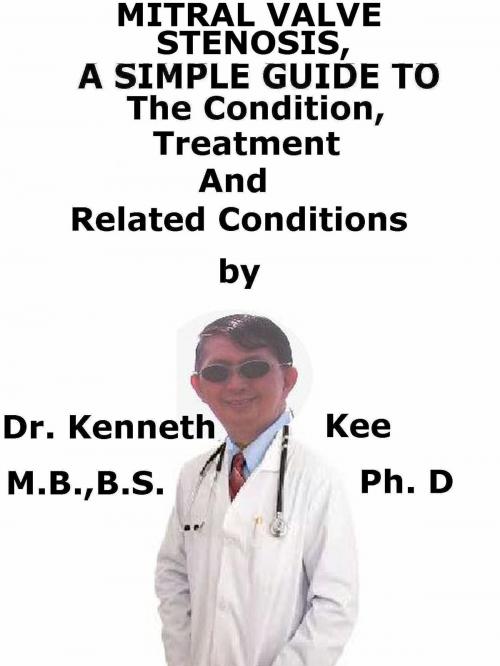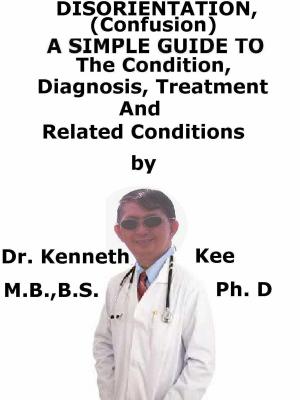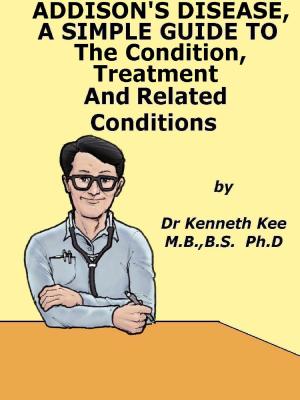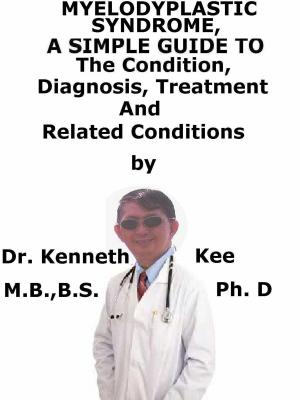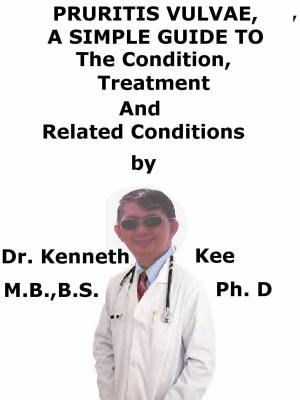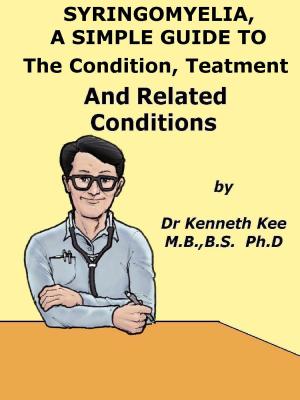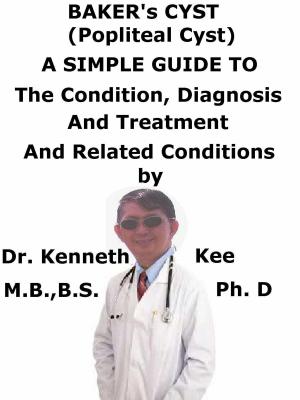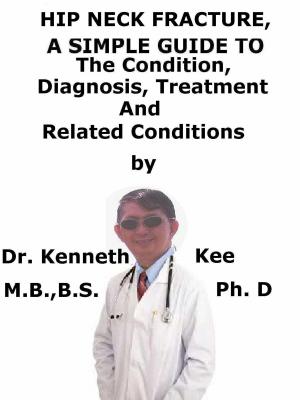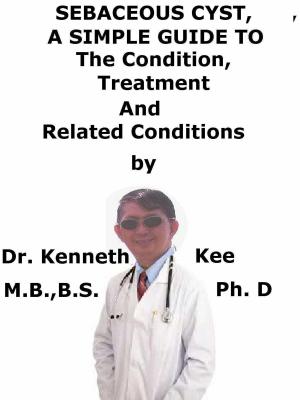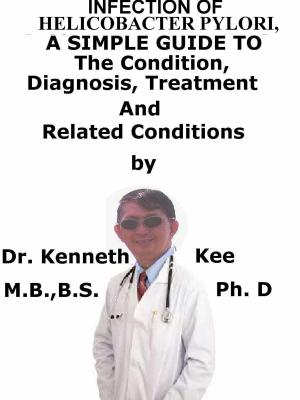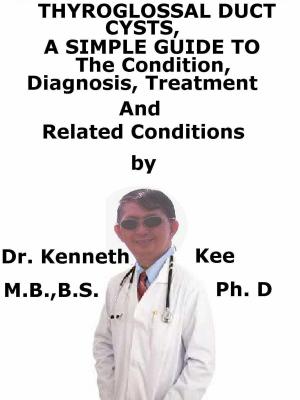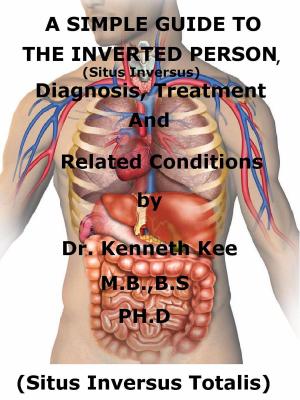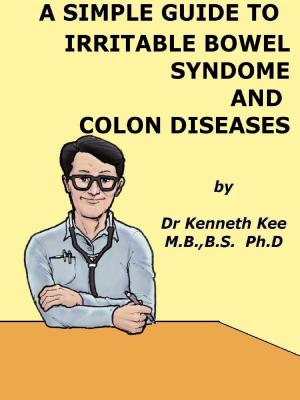Mitral Valve Stenosis, A Simple Guide To The Condition, Treatment And Related Conditions
Nonfiction, Health & Well Being, Medical, Specialties, Internal Medicine, Cardiology, Health, Ailments & Diseases, Heart| Author: | Kenneth Kee | ISBN: | 9781370281718 |
| Publisher: | Kenneth Kee | Publication: | January 18, 2017 |
| Imprint: | Smashwords Edition | Language: | English |
| Author: | Kenneth Kee |
| ISBN: | 9781370281718 |
| Publisher: | Kenneth Kee |
| Publication: | January 18, 2017 |
| Imprint: | Smashwords Edition |
| Language: | English |
Mitral Stenosis is a condition in which the valve does not open fully causing restriction of blood flow
Mitral stenosis means that the valve cannot open enough.
As a result less blood flows to the body.
The upper heart chamber swells as pressure builds up.
Blood and fluid may then collect in the lung tissue (pulmonary edema) making it hard to breathe.
Symptoms are:
1. Cough
2. Shortness of breath
3. Poor feeding or sweating when feeding
4. Poor growth
Signs:
1. Malar flush on the cheeks.
2. Laterally displaced apex beat.
3. Right ventricular heave.
4. Loud first heart sound with an opening snap in early diastole.
5. A mid-late diastolic murmur, best heard, with the patient in the left lateral position, with the bell of the stethoscope.
6. Signs of right ventricular failure including
a. Hepatomegaly,
b. Lung congestion
c. Ascites
d. Peripheral edema.
Chest x-ray and CT scan may show left atrial enlargement and interstitial edema with Mitral valve calcification
ECG (electrocardiogram)
1. Left atrial hypertrophy:
a. P mitrale - increased voltage in the later part of the P wave gives it a large, bifid appearance in leads II, III and aVF
b. The second half of the P wave is negative in V1
c. Atrial fibrillation is present in 60 to 70%
2. Right ventricular hypertrophy:
a. A dominant R wave in V1 and V2 indicates pulmonary hypertension
b. Right axis deviation
Treatment
People with mild symptoms or none at all may not need treatment.
For severe symptoms, diagnosis and treatment may be done at the heart specialist clinic.
A. Medicines:
Medications are used to treat:
1. Symptoms of heart failure
a. Diuretics (water pills),
2. Abnormal heart rhythms (most commonly atrial fibrillation)
a. Beta-blockers,
b. Digoxin.
3. High blood pressure
a. Calcium channel blockers,
b. ACE inhibitors,
c. Angiotensin receptor blockers (ARBs)
4. Prevent blood clots.
Anticoagulants (blood thinners) are used to prevent blood clots from forming and traveling to other parts of the body.
5. Prevent infection
People who have had rheumatic fever may need long-term preventive treatment with penicillin.
Heart Surgical procedures to treat mitral stenosis.
1. Percutaneous mitral balloon valvotomy (also called valvuloplasty) may be tried instead of surgery in people with a less damaged mitral valve.
During this procedure, a tube is inserted into a vein, usually in the leg.
It is threaded up into the heart.
A balloon on the tip of the catheter is inflated widening the mitral valve and improving blood flow.
2. Repair or replacement of the mitral valve.
Replacement valves can be made from different materials
TABLE OF CONTENT
Introduction
Chapter 1 Mitral Stenosis
Chapter 2 More Facts about Mitral Stenosis
Chapter 3 Treatment of Mitral Stenosis
Chapter 4 Heart Valve Diseases
Chapter 5 Mitral Regurgitation
Chapter 6 Aortic Stenosis
Chapter 7 Pulmonary Stenosis
Chapter 8 Tricuspid Stenosis
Epilogue
Mitral Stenosis is a condition in which the valve does not open fully causing restriction of blood flow
Mitral stenosis means that the valve cannot open enough.
As a result less blood flows to the body.
The upper heart chamber swells as pressure builds up.
Blood and fluid may then collect in the lung tissue (pulmonary edema) making it hard to breathe.
Symptoms are:
1. Cough
2. Shortness of breath
3. Poor feeding or sweating when feeding
4. Poor growth
Signs:
1. Malar flush on the cheeks.
2. Laterally displaced apex beat.
3. Right ventricular heave.
4. Loud first heart sound with an opening snap in early diastole.
5. A mid-late diastolic murmur, best heard, with the patient in the left lateral position, with the bell of the stethoscope.
6. Signs of right ventricular failure including
a. Hepatomegaly,
b. Lung congestion
c. Ascites
d. Peripheral edema.
Chest x-ray and CT scan may show left atrial enlargement and interstitial edema with Mitral valve calcification
ECG (electrocardiogram)
1. Left atrial hypertrophy:
a. P mitrale - increased voltage in the later part of the P wave gives it a large, bifid appearance in leads II, III and aVF
b. The second half of the P wave is negative in V1
c. Atrial fibrillation is present in 60 to 70%
2. Right ventricular hypertrophy:
a. A dominant R wave in V1 and V2 indicates pulmonary hypertension
b. Right axis deviation
Treatment
People with mild symptoms or none at all may not need treatment.
For severe symptoms, diagnosis and treatment may be done at the heart specialist clinic.
A. Medicines:
Medications are used to treat:
1. Symptoms of heart failure
a. Diuretics (water pills),
2. Abnormal heart rhythms (most commonly atrial fibrillation)
a. Beta-blockers,
b. Digoxin.
3. High blood pressure
a. Calcium channel blockers,
b. ACE inhibitors,
c. Angiotensin receptor blockers (ARBs)
4. Prevent blood clots.
Anticoagulants (blood thinners) are used to prevent blood clots from forming and traveling to other parts of the body.
5. Prevent infection
People who have had rheumatic fever may need long-term preventive treatment with penicillin.
Heart Surgical procedures to treat mitral stenosis.
1. Percutaneous mitral balloon valvotomy (also called valvuloplasty) may be tried instead of surgery in people with a less damaged mitral valve.
During this procedure, a tube is inserted into a vein, usually in the leg.
It is threaded up into the heart.
A balloon on the tip of the catheter is inflated widening the mitral valve and improving blood flow.
2. Repair or replacement of the mitral valve.
Replacement valves can be made from different materials
TABLE OF CONTENT
Introduction
Chapter 1 Mitral Stenosis
Chapter 2 More Facts about Mitral Stenosis
Chapter 3 Treatment of Mitral Stenosis
Chapter 4 Heart Valve Diseases
Chapter 5 Mitral Regurgitation
Chapter 6 Aortic Stenosis
Chapter 7 Pulmonary Stenosis
Chapter 8 Tricuspid Stenosis
Epilogue
